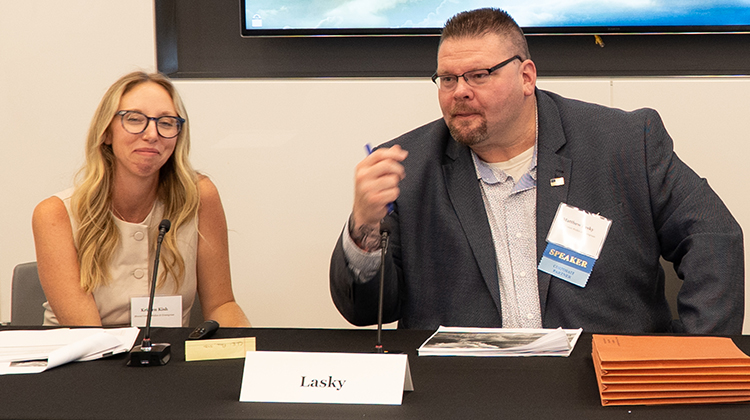Matthew J. Lasky and Kristen C. Kish of Mound Cotton Wollan & Greengrass led the session on California wildfires over the past several years, including some of the major insurance and reinsurance coverage issues.
The discussion began with a cautionary note that “wildfire” itself may be a defined term in an insurance or reinsurance contract, which may create coverage issues. For example, some definitions of “wildfire” are limited to rural areas.
The Panelists gave an overview of the extent of the damages in recent wildfires, as well as the potential causes. They moved to an overview of various governmental solutions to insurance availability, most notably the California FAIR Plan. The FAIR plan was designed as a safety net for homeowners, but has become the primary insurer for many California homeowners despite its limited coverage, including a cap of $3,000,000. The FAIR Plan is a syndicated fire insurance pool comprised of all insurers licensed in California, and based on member company participation in the market. The plan is now under significant financial pressure, and may need to be shored up by a special assessment against pool members who may then recoup their fees from policyholders through supplemental fees; one such assessment has already happened. Estimated losses range from $20 billion to $45 billion, a significant amount of which will fall on reinsurers.
The Panelists then provided an overview of the major coverage issues. One major issue is whether there has been property damage, and whether the damage is to covered property. For example, costs to remove debris from fire around an unburned home may not be covered because the debris does not alter the property itself, whereas smoke damage to unburned property may constitute direct physical loss. Alternatively, a restaurant forced to close due to smoke damage might have a covered cause of loss, but a restaurant unable to serve customers due to a governmental directive to close roads may not be covered as property damage.
Next, the Panelists provided an overview of the major reinsurance issues. In particular, determining the “occurrence” is an important and contract-specific concern. For instance, the damage may be caused by a single storm but multiple lightning strikes, or by regular winds which cause a fire to jump. Treaties vary significantly in their occurrence and aggregation language, and an Hours Clause or Radius Clause may provide further restrictions on coverage.
Lastly, the Panel went over case studies on how insurers and regulators have responded in the California Market. In 2023, State Farm completely withdrew from new home policies in California, specifically citing wildfires as one of the reasons. CSAA also issued significant non-renewals after the 2018-2020 wildfires. The State of California restricted the ability of insurers to issue cancellations or non-renewals as a result of wildfire risk. Several other insurers requested significant rate hikes, such as Allstate.
The panel ended on possible insurance solutions, including California Insurance Commissioner Lara’s “sustainable insurance strategy” plan to overhaul state insurance regulations by the end of the year. The plan would, among other things, allow for costs of reinsurance as a ratemaking factor and allow use of forward-looking cat models to predict future risk.
A video replay of this presentation is available on the AIRROC On Demand Library.
